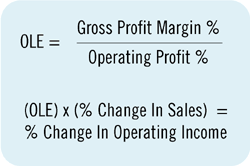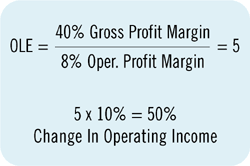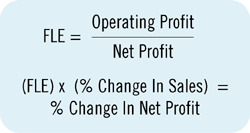
In terms of general operations, contracting by nature is "risky business." It requires potentially large investments in assets - vehicles, truck stock, inventory, tools, etc. A large percentage of sales may not come from repeat business, unlike a hair salon, accounting firm, or grocery store.
Even companies that set up programs with their customer base to ensure repeat business feel the effects of uncooperative weather conditions.
Competition in the industry has always been stiff, especially when competing against companies that do not know how to profitably price their services; these companies may last for years before their poor pricing habits finally catch up with them.

In the field of financial management, risk is defined as "variance." For example, which investment would you expect to be more risky: an investment in the stock of a small startup company or an investment in the stock of the McDonalds Corporation?
Your answer should be the small startup company because the price of stock for a new, small company might be expected to fluctuate up and down more widely, relative to its share price, than stock in a large, established corporation, such as McDonalds. This degree of change is known as variance.
By defining risk as variance, we can now look at how you can reduce the risk (or variance) in your own company's profits. Effective marketing will play a role in the variance of profits that your company experiences; however, that subject is for another discussion. We are going to focus on the operational and financial components of your company and how to measure and control the variance in these components.
Operational Risk
Measuring operational risk be-gins by taking stock of your company's fixed costs. Fixed costs are those that do not fluctuate in the short term because of changes in your company's sales numbers. These are the costs that must be covered by your "gross profit," or after you have paid for labor, equipment, and materials. Another term for fixed costs is "operating leverage."
The simple formula shown at right can help you to determine your company's operating leverage. This formula is termed the operating leverage effect (OLE).

Assume a hypothetical HVAC contracting company has an OLE of 5. Further assume that this company has a 10-percent change in annual sales. (See figure at right.)
Based on this company's operating leverage, a 10-percent change in sales (up or down) will result in a 50-percent change in operating profits (up or down).
As you can see, operating leverage can be good and bad. Higher operating leverage can result in much higher operating profits when sales are increasing and can wipe out operating profits when sales are decreasing.
Therefore, operating leverage will contribute to a company's variance in operating profits and contribute to a company's operating risk.
By knowing your company's operating leverage effect, you can gain insight on how you can manage operating risk. Are you comfortable with the operating risks (fixed costs) you are taking with your company?

Financial Risk
We can use a similar formula to determine your company's financial risk. This formula is termed the financial leverage effect (FLE). (See figure at right.)The financial leverage effect measures the leverage of a company based upon its debt structure. A company paying out a large percentage of its profits in interest charges due to a heavy debt load is highly leveraged financially. Just like operating leverage, this can be a double-edged sword. When times are good for a highly financially leveraged company, they are very good. But when times are bad, they can be very bad.

Total Leverage
The total leverage effect (TLE) of a company can be measured by multiplying its OLE x FLE, or by simply dividing the company's gross profit margin by net profit margin. (See figure at right.)A company with a 40-percent gross profit margin and a 4-percent net profit margin would have a TLE of 10. For every 1-percent change in this company's sales, its net profit will change 10 percent. A 20-percent change in sales would incur a 200-percent change in profit (up or down).
What is the right leverage (risk) for your company? That depends on you, your investors, and your creditor's tolerance for risk. If your life savings is invested in your business, as is the case with many contractors through personal guarantees, etc., you will want to keep a close eye on your company's leverage.
Also, keep in mind the question that I posed to you earlier about what kind of return you would expect to earn on a small startup stock or McDonalds stock. If you are considering selling your company down the road, a high variance in your company's profits could negatively affect the sale price of your business.
As an owner of a small business, you can have some control over the risk your company faces. Manage your company for the maximum profit at the minimum risk. When high operating leverage is used by a company, low financial leverage is best. When high financial leverage is utilized by a company, low operating leverage is best.
Next week: The importance of relevant operating measurements.
Roberts is owner of Roberts Commercial Lending Co. LLC. He provides corporate finance and debt consulting, business loans, and leasing services. He can be reached at 586-716-8329 or CommercialFnnc@aol.com.
Publication date: 03/29/2004

Report Abusive Comment